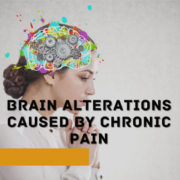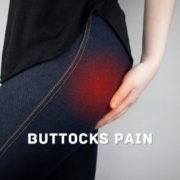Factors Associated with Chronic Pain
The majority of new pain disappear after a few weeks or months, but others last for years. Why?
Although the process of going from acute to chronic pain has been researched for years, it is still unknown. Catastrophizing, self-efficacy, and mental health have all been shown to be significant factors in epidemiological investigations. According to certain MRI studies, those who go from having acute to chronic back pain have more activity in their emotional processing regions of the brain. (For a post on these studies, see here.) This study has several flaws, such as limited sample numbers and the inability to evaluate prediction models across various datasets.
A recent study seems to represent a development in this field of research. I learned about it when Derek Griffin shared a tweet from epidemiology expert Gary McFarlane, who said that it could be among the most significant articles on the epidemiology of pain ever published. It has a variety of intriguing data and backs up the notion that psychosocial factors are crucial for comprehending chronic pain. Here are some specifics on the procedures and results.
The study looked at information from the UK Biobank, which collects health data on tens of thousands of people over time. Numerous diverse factors, such as pain, blood pressure, emotional stress, socioeconomic status, grip strength, alcohol use, sleep, weight, physical activity, and mental health are all covered by the Biobank.
To create a prediction model and “risk score” that would try to forecast discomfort nine years from baseline, machine learning assessed 99 of these characteristics. Several data sets, including one including patients from Finland, were used to anticipate changes in pain in order to evaluate the model’s accuracy.
The model was taught to recognize many sites of discomfort as well as how pain progresses over time. Complex medical diseases including fibromyalgia, chronic fatigue syndrome, and central sensitization are all highly correlated with multi-site pain. An excerpt from the essay.
The number of coexisting pain sites is a crucial trait that distinguishes between various chronic pain syndromes and indicates their intensity and effects. We come to the conclusion that a prediction model for a variety of pain syndromes may be trained effectively using the number of overlapping pain sites. Each patient’s baseline “risk score” was generated by the prediction model and applied. It was able to account for 14% of the variation in how pain evolves with time. This proves to me that it’s really difficult to forecast pain, even when you have a ton of data and the processing capability to evaluate it. However, the risk score’s conclusions about the factors with the greatest capacity for explanation do catch my attention. Mood, neuroticism, and sleep were these:
We found that fatigue and seeing a doctor for depression or anxiety were important risk factors for co-occurring pain on many body locations, as did sleeplessness, neuroticism (feeling irritated), and anthropometric measurements (BMI). Socioeconomic aspects were less significant than anticipated. The protective factors were employment, employment grip strength, and abstinence from alcohol.
How mood affects behavior
The findings imply that mood-related elements may be early warning indications leading to the development of chronic pain since mood was the first component in the spread of pain. However, profession came in last, indicating that elements associated with a work or vocation may not have as much of an influence on the onset or advancement of chronic pain as other factors like mood, anthropometric measures, neuroticism, or sleep. We were able to better identify the cascade of variables predicting the progression of chronic pain by developing a preliminary temporal ordering of these risk factors. This information might be used to create more focused therapies to prevent or treat pain disorders.
The authors developed a simplified risk score that only required six questions, which were as follows:
- Do you have a lot or a lot of trouble falling asleep?
- Do you believe that your life has included a lot or a lot of ongoing effort?
- Do you have a significant or significant loss of energy or sense of helplessness?
- Have you ever had a doctor diagnose or treat a mental health issue for you?
- Have any of the following occurred to you: Divorce
Work history includes being jobless, getting practically all of my jobs via employment assistance services, or never having a job that was financially rewarding, BMI more than 30 as measured
The risk ratings derived from this simple set of inquiries were almost as accurate as those from the more intricate study comprising 99 factors.
Takeaways
Here are some things I learned
Even with a wealth of data, chronic pain is still challenging to forecast.
Multi-site pain has to be given greater consideration. How many other areas of the body ache as well? is one of the most illuminating (and simple) queries that may explain why any ONE portion of the body hurts. The higher the score, the more likely it is that the pain is due to issues with generalized pain sensitivity rather than specific localized tissue injury.
We should pay greater attention to symptoms of exhaustion, lethargy, irritability, and overall inability to meet life’s difficulties. The spread of pain through time and space should get greater emphasis in studies on chronic pain. One takeaway from this work is that discomfort may spread more often from the proximal to the distal end than the other way around.
References
- Jackson T, Wang Y, Wang Y, Fan H. Self-efficacy and chronic pain outcomes: a meta-analytic review. J Pain. 2014 Aug;15(8):800-14. doi: 10.1016/j.jpain.2014.05.002. Epub 2014 May 28. PMID: 24878675.
- Sizheng Steven Zhao, Michael V Holmes, Uazman Alam, Disentangling the relationship between depression and chronic widespread pain: A Mendelian randomisation study,Seminars in Arthritis and Rheumatism, Volume 60, 2023
- Tanguay-Sabourin, C., Fillingim, M., Guglietti, G.V. et al. A prognostic risk score for development and spread of chronic pain. Nat Med 29, 1821–1831 (2023). https://doi.org/10.1038/s41591-023-02430-4









